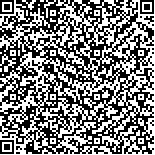| 康瑞华,刘曙正,王一先,等.2013—2021年河南省淮河流域地区上消化道癌筛查效果分析[J].中国肿瘤,2024,33(5):366-372. |
| 2013—2021年河南省淮河流域地区上消化道癌筛查效果分析 |
| The Screening Outcomes of Upper Gastrointestinal Tract Cancer in Huaihe River Basin Area from 2013 to 2021 in Henan Province |
| 投稿时间:2024-02-06 |
| DOI:10.11735/j.issn.1004-0242.2024.05.A005 |
|
 |
| 中文关键词: 上消化道癌 筛查 检出率 淮河流域 河南 |
| 英文关键词:upper gastrointestinal tract cancer screening detection rate Huaihe River Basin Henan |
| 基金项目:国家重点研发计划“政府间国际科技创新合作”重点专项(2021YFE0106000);河南省科技发展计划(232102310166) |
|
| 摘要点击次数: 365 |
| 全文下载次数: 201 |
| 中文摘要: |
| 摘 要:[目的] 分析2013—2021年河南省淮河流域地区上消化道癌筛查效果。[方法] 采用整群抽样的方式,选取发病率和死亡率较高的乡镇或村庄作为筛查现场,对当地40至69岁常住居民进行筛查。对评估为高危人群的个体采用“内镜+碘染色”方法进一步检查,分别计算上消化道癌(包括食管癌与胃癌)各级别病变、早期病例和阳性病例检出率以及早诊率等评价指标。采用χ2检验和趋势χ2检验对不同性别、年龄及时间的检出率进行比较。[结果] 2013至2021年间,河南省淮河流域地区上消化道各级别病变的检出率为4.96%(1 980/39 895),其中,食管各级别病变检出率为3.05%(1 215/39 895),胃各级别病变检出率为1.93%(768/39 895)。上消化道阳性病例的检出率为0.83%(330/39 895),早期病例的检出率为0.62%(248/39 895),早诊率为75.15%(248/330)。男性各级别病变的检出率均高于女性(P<0.05);随着年龄增长,各级别病变的检出率也呈增加趋势(P trend <0.05)。2013—2021年上消化道各级病变的检出率随时间增长呈上升趋势(P trend <0.05),但阳性病例和早期病例检出率随时间变化保持稳定(P trend >0.05)。[结论]上消化道癌筛查有助于及时发现各级别病变患者。男性和老年人群在上消化道癌筛查中属于重点关注群体,需要提升该人群的筛查参与度,以进一步提高上消化道癌的筛查效果。 |
| 英文摘要: |
| Abstract:[Purpose] To analyze the screening results of upper gastrointestinal tract cancer in the Huaihe River Basin area of Henan Province from 2013 to 2021. [Methods] Cluster sampling method was adopted to select residents aged 40~69 years old in high-risk areas in the Huaihe River Basin area of Henan Province. For individuals evaluated as high-risk groups, the method of “endoscopy + iodine staining” was used for further examination. The detection rate of different lesions, early cases and positive cases of upper gastrointestinal cancer(including esophagus cancer and stomach cancer) and early diagnosis rate were calculated. The detection rates of different sex, age and time were compared. [Results] From 2013 to 2021, the detection rate of lesions of different levels in the upper gastrointestinal tract in the Huaihe River Basin area of Henan Province was 4.96% (1 980/39 895). Among them, the detection rate of esophageal lesions was 3.05% (1 215 / 39 895), and the detection rate of stomach lesions was 1.93% (768 / 39 895).The detection rate of positive cases was 0.83% (330/39 895), the detection rate of early cases was 0.62% (248/39 895), and the early diagnosis rate was 75.15%(248/330). The detection rates of different level lesions in men were significantly higher than those in women (P<0.05), and with age increasing, there was a trend of increasing detection rates of different level lesions (P trend <0.05). From 2013 to 2021, the detection rate of upper digestive tract lesions increased with time (P trend <0.05), but the detection rate of positive cases and early cases remained stable over time (P trend > 0.05). [Conclusion] Screening efforts contribute to the timely detection of precancerous lesions and early-stage cancer patients. Additionally, males and the elderly are important target populations for upper gastrointestinal tract cancer screening, and increased participation rates are necessary for more effective screening outcomes. |
|
在线阅读
查看全文 查看/发表评论 下载PDF阅读器 |